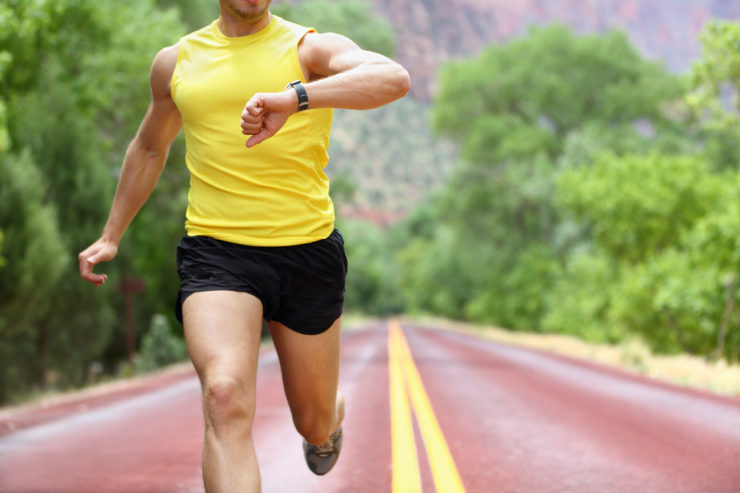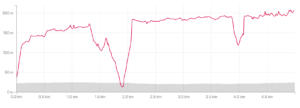ATC 267: Sudden Drops in Heart Rate, RPE and MAF, Back to Back Racing, Transitioning to Triathlon, and more!
August 17, 2018Sponsor:
 This episode is brought to you by Generation UCAN Superstarch, the incredible fuel of choice for endurance athletes and health enthusiasts looking for burn more fat for fuel, optimize sports performance and keep blood sugar in check. EP fans get 15% of UCAN, shop now. You can also use the code “enduranceplanet” if you’re shopping at generationucan.com for that 15% discount. Join the revolution. You can burn more fat for fuel. Oh, and be sure to check out the UCAN bars with peach and also another flavor with coffee beans for an added kick!
This episode is brought to you by Generation UCAN Superstarch, the incredible fuel of choice for endurance athletes and health enthusiasts looking for burn more fat for fuel, optimize sports performance and keep blood sugar in check. EP fans get 15% of UCAN, shop now. You can also use the code “enduranceplanet” if you’re shopping at generationucan.com for that 15% discount. Join the revolution. You can burn more fat for fuel. Oh, and be sure to check out the UCAN bars with peach and also another flavor with coffee beans for an added kick!
Sponsor:
 Check out the new highly anticipated HealthFit University and how you can join this aerobic revolution. Health Fit U is led by health and fitness experts Dr. Mark Cucuzzella, Dr. Phil Maffetone, Ian Adamson, Jeff Vernon, Robin Desjardins and EP’s own Tawnee Gibson. Whether you’re a healthcare professional, fitness coach, trainer, or recreational or competitive athlete, HealthFit U is open to you with educational seminars and online resources that aim to help you and your clients build balanced, fat-burning, energized bodies for optimal performance. The next Health Fit U seminar is September 29-30, in Ranson, West Virginia. Book before Sept. 1 and save $50. Some other benefits of HealthFit U that you will love:
Check out the new highly anticipated HealthFit University and how you can join this aerobic revolution. Health Fit U is led by health and fitness experts Dr. Mark Cucuzzella, Dr. Phil Maffetone, Ian Adamson, Jeff Vernon, Robin Desjardins and EP’s own Tawnee Gibson. Whether you’re a healthcare professional, fitness coach, trainer, or recreational or competitive athlete, HealthFit U is open to you with educational seminars and online resources that aim to help you and your clients build balanced, fat-burning, energized bodies for optimal performance. The next Health Fit U seminar is September 29-30, in Ranson, West Virginia. Book before Sept. 1 and save $50. Some other benefits of HealthFit U that you will love:• Certifies coaches specializing in endurance, strength, health and corporate.
• Certifies health practitioners and offers CMEs and other continuing education credits.
• Will post coaches and practitioners for referrals.
Coach Lucho and Coach Brock began this episode of “Ask The Coaches” by discussing:
– “Enclothed cognition“: how what you’re wearing has a significant impact on psychological processes (like, if Lucho is wearing cowboy boots, he won’t be tempted to over-exercise)
– How your brain uses significant energy, and why cognitive tasks can be just as fatiguing as physical workouts (see research by Dr. Samuele Marcora)
– Social media notifications can stimulate a dopamine response similar to sex (this scientific article defines “pleasure-only” activities—social media and meaningless sex among them—and explains why they harm our biopsychological health)
Then they answered the following questions:
Kev asks:
My question is – I’ve noticed it a lot over the years – that during my short/superhard runs & races, my heart rate climbs normally along with the effect and then drops quite rapidly, then after a minute it slowly climbs back up. This effect has been repeated a few times with 2 different watches and 3 different heart rates. I always seem to be breathing hard while racing and always feel my legs will last longer than the lungs.
I’m 44, been running for 9 years, resting HR around 55-65 and max 207
https://www.strava.com/activities/1696142939/overview
Is this anything to worry about? It’s never an issue on the longer ultra paced events.
The coaches say…
– Could be bradycardia or vasovagal syncope.
– Blood pooling in the lower extremities could also cause it.
– If you find your heart rate is dropping on a regular basis during exercise, you should check with your doctor to determine if you have a heart arrhythmia.
Kenneth asks:
I am interested in finding information on using rate of perceived of effort (RPE) along with the MAF method rather than a heart rate monitor. Can you point me in the right direction?
The coaches say…
– Brock has a Get-Fit Guy article about that.
– This study has some insight on RPE accuracy: The researchers had 2,560 Caucasian men and women between 17 and 44 years old completed incremental exercise tests on treadmills or stationary bikes. Their heart rate, blood lactate concentration, and Rate of Perceived Exertion (RPE) were all simultaneously measured. Rating of perceived exertion was strongly correlated with heart rate and blood lactate. They concluded that “Borg’s RPE seems to be an affordable, practical and valid tool for monitoring and prescribing exercise intensity, independent of gender, age, exercise modality, physical activity level and Coronary Artery Disease status.”
Tim asks:
Yesterday at 48 years old, I won a mountainous 1/2 marathon with about 170 participants. I use many of the primal blueprint principles such as aerobic base periods (late winter and spring), heat and cold exposure, fasting, and weight training. I started with a 50 mile ultra with 13,000 of vert in June. During my race season (late June-September) I am much busier. During this time I do quite of a bit of weight training (I’ve been doing weights for 30 years), more sprinting, full body circuit training and MSP workouts. Midsummer my run volume is lower with more intensity, and every 7-10 days I do a long run. Essentially I reserve my intense training for my early race season. I will now add more overall volume (I will have more time) but reduce intensity focusing on my September races.
I am training for 3 mountainous races. A 16.5 miler, a 65 miler, and a 20 miler all separated by only a week. The 16.5 and 20 are for a series win, with the 65 miler (not a priority) in between. I’m very fat adapted, muscular and lean. I use hrv and take rest when needed and have an average hrv in the 130’s (very high). I’m wondering how to approach the time between now and my 3 September races.
Should I just rebuild aerobic base? Keep sprinting and weight training? I could skip the 65 miler and go for the win in the series, or just go for all 3 races. I could try to push hard at the 16.5, cruise the 65, and do what I can at the closing 20. It has been the best and healthiest I’ve ever felt and I’m afraid to change too much.
Ps. I feel the best when I wt train year-round, backing off on heavy legs near race and high volume weeks.
The coaches say…
– Lucho thinks you should ditch the 65 miler because you would have to change your training.
– Brock thinks you should do them all if you feel like that is the real goal.
– Don’t fix what isn’t broken – and you are not broken!
– Your HRV is showing that you aren’t having nervous system issues.
Anonymous asks:
I am a 21-year-old female and my question is in regards to the transition from running to triathlon. I am relatively new to running. I started aged 18, in 2014, when I started University in Scotland. I came from playing competitive soccer my whole life. I played for our national team up until under 19 age group. I changed to running after being inspired by Chrissie Wellington’s book, ‘Without Limits’ and upon watching the Common Wealth Games, which were hosted by Scotland.
After running for a year and a half, mostly doing road and XC, I transferred to a school on track and XC scholarship, that is top in the This school is top in the nation for its distance programme. I am now in Colorado completing my masters. I have 2 or 3 years left of eligibility to run track and XC.
Since starting running, I have been very injury prone. I have done more cross training than running in my time as a XC and track athlete. I have fallen in love with cycling.
I am very interested in making my transition into olympic distance triathlon. I am wondering how the structure of a running training programme differs from a triathlon specific training programme?
I have to run for the next couple of years in college to fund my education, however, I am interested in incorporating a triathlon based training programme, so that I make the transition once I am done in college. I figured that incorporating a triathlon based approach may help in reducing the number of running injuries I have.
I would have to incorporate it around my team’s practice. Our major workouts are…
– Tuesday: short reps on track
– Thursday: fartlek
– Saturday: Tempo
– Sunday: Long run
Within this structure, how can I start including triathlon training and begin my transition? What is the basis for triathlon training? Do you still have a long run? How do you split it up into the three components? How many high intensity “workouts” do you do in a week?
The coaches say…
– Be careful while you are in school to not mess up your scholarship.
– Don’t do a workout that could hurt your team run workouts.
– Wait on high intensity training. Focus on zone 2 base work.
– Start by adding in a swim component so you aren’t learning that at the last minute.
– Easy spinning on the bike after/between run workouts can help with recovery.
– Long runs are relative, for Oly distance, long is pretty short by comparison to what you are doing now.
– Splitting up the components is dependent on the athlete and their strengths and weaknesses. Since you are a good runner, you can let that slide (after you are out of school).
– For triathlon training plans, check out Joe Friel’s Triathlon Training Bible.
Finally, in their concluding banter, Lucho mentioned this study on the correlation between physical exercise and mental health (duh, we know, but it’s nice to see the science).
Add your thoughts


One Comment
Lucho, what is the highest heart rate you're recording in your speed workouts these days?